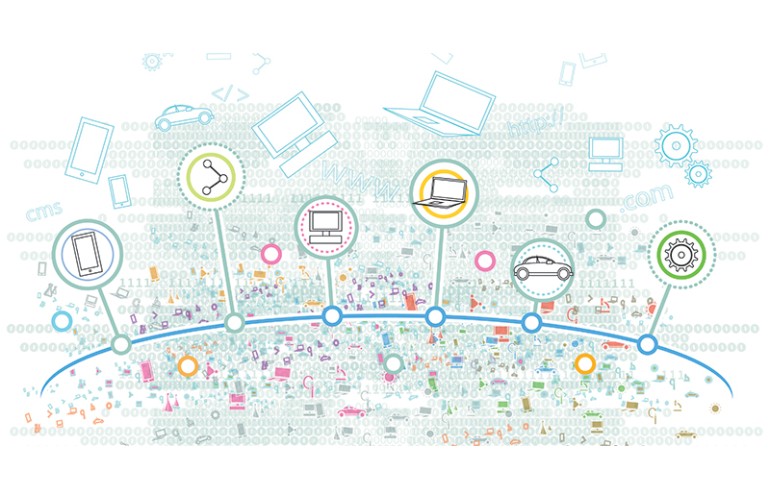 Subscribe
Subscribe- Login
-
/
Sign Up
- US Black Engineer
- >>
- Articles
- >>
- EDUCATION
- >>
- On Campus
- >>
- Industrial Internet Programs at HBCUs
|
Getting your Trinity Audio player ready...
|
Data is the new dollar, and historically black colleges and universities (HBCUs) are gearing up their graduates for a networked world.
Whether you are a private business or the Department of Defense, your Industrial Internet of Things (IIoT) involves sensors, a system or machine or groups of machines, software, and quite a bit of data, notes Robin N. Coger, dean of the College of Engineering at North Carolina A&T State University.
Coger adds that the physical parts of the IIoT tend to be linked to the virtual parts through a network.
“Threaded throughout the IIoT is the fact that its accomplishments will persistently be tested by those who seek to compromise its networks,” she noted.
“Considering all the elements of the IIoT, what single academic major has the necessary skills to defend against such attacks, detect and counter compromises when they occur, and design solutions to reduce vulnerability to future attacks” she asked.
A&T’s College of Engineering has found the answer in a cross-disciplinary approach. Researchers across computer science, computer engineering, industrial and systems engineering, and electrical engineering at A&T team up for industrial internet projects.
“This is enabling our college’s researchers to extend what began as innovation in cyber-identity and omputing to new frontiers critical to the reliability of the IIoT,” Coger said.
At Virginia State University, computer-manufacturing engineering, computer science, and other programs are also helping students explore real-time communication between sensors and networks that connect the physical to the cyber world. Integration is taking on several forms.
“We are creating an Industry 4.0 lab, where students can study and research the application of Internet of Things (IoT) in manufacturing,” said Keith Williamson, dean of Engineering, Science and Technology and associate vice president for research and innovation.
“Our assembly system consists of multiple assembly robots, automated material handling systems, and a vision control quality assurance system all connected to an ERP system through embedded sensors and RFID,” he said.
Radio frequency identification (RFID) tags are intelligent bar codes that can talk to a networked system to track every product that you put in your shopping cart.
Enterprise resource planning (ERP) is business process management software that allows organizations to use a system of integrated applications to manage the business and automate back office functions related to technology, services, and human resources.
VSU’s Industry 4.0 lab allows students to gain hands-on experience in creating the Internet of Things networks and will also be used to study condition-based maintenance based on predictive analytic models collecting data from the IoT network.
Raymond Boykin, a research professor in information logistics technology and a System, Applications & Products (SAP) Fellow is focused on enterprise resource planning (ERP) logistics information systems and supply chain risk.
“Our second initiative is closely related and involves IoT in the design of our SAE Formula,” Boykin adds. “This application includes connected communications with the machines utilized in the manufacturing process and the connection of the PLM software (Siemens Team Center) with the ERP software,” he said, adding that there are plans to expand this into the race car monitoring system to track performance.
Another initiative involves bringing the economics programs to the College of Engineering and Technology. Given the nature of IoT ecosystems, VSU anticipates the need for dual programs that merge technology with economic theory.
“We anticipate the need for new economic models specifically aimed at technology-related industries facing rapidly changing market challenges,” Williamson said.
The goals are to provide students with new concepts for value creation as IoT shifts economic models for capturing value. VSU aims to establish a vision for entrepreneurship where value creation in the traditional product mindset shifts from solving existing needs in a reactive manner to solving problems in real time and in a predictive manner.
On February 1, 2016, Dr. Makolah Abdullah became Virginia State University’s 14th president with a pledge to transform the institution into “Virginia’s Opportunity University.” At 24, Abdullah became the youngest African American in Northwestern’s history to receive a Ph.D. in engineering.
“We are at the front and in the business of getting better,” Dr. Abdullah said. “The integration of the Internet of Things into our courses is evidence that we are providing quality and innovation into our programs to provide our students with experiences that will give them meaningful opportunities in STEM-related fields when they graduate. We are excited to be a part of this innovative learning experience.”
The Higher Education Research and Development Survey shows Virginia State University (VSU) recently spent $8.37M on R&D. Compared to other research universities, VSU spends an average amount of money on research (average: $8.17M).
Out of the total $8.37M R&D budget, Virginia State University invested $5.01M in life sciences (59.8% of the total fund).


